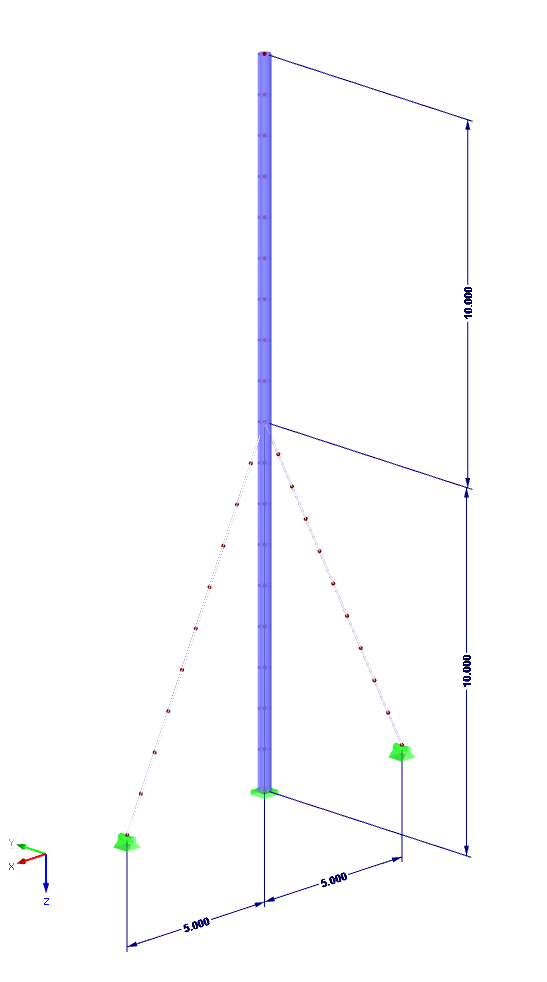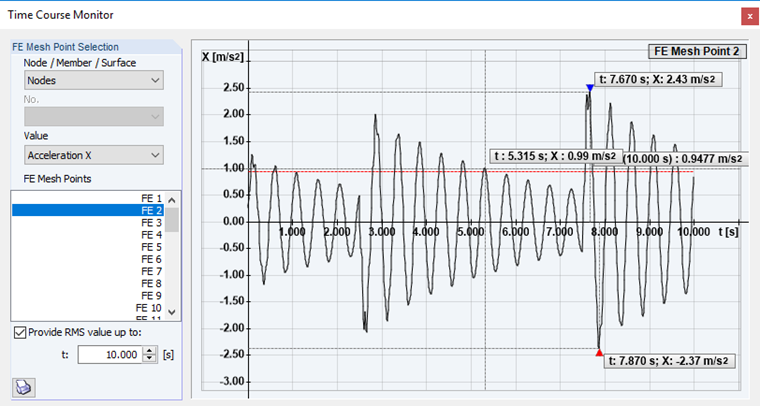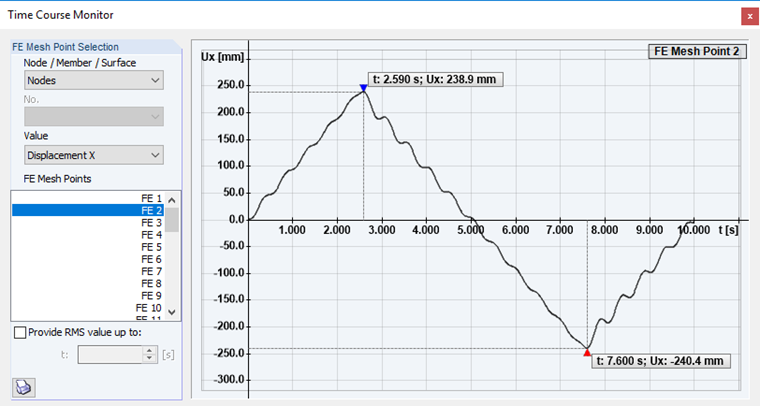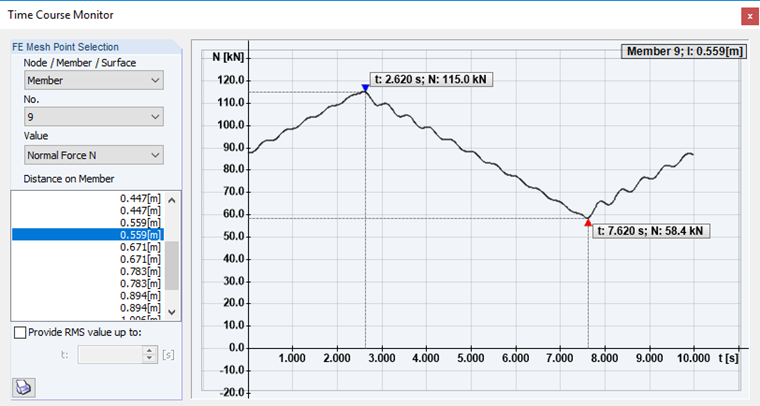Structural System and Preliminary Studies
The structural system is a tower consisting of a pipe cross-section RO 355.6 x 10 with the steel strength S235. In the middle of the tower, it is supported by two prestressed cables and fixed at the footing. The prestress in the cables amounts to 100 kN.
Before the time history analysis can be started, a modal analysis is performed to analyze the dynamic behavior. Since a modal analysis is always linear, the effect of cables cannot be considered. The cables are replaced by linear trusses. However, the RF-DYNAM Pro add-on module offers options to model the behavior of cables more realistically. Use the "Stiffness Modifications" function in the "Natural Vibration Cases" tab. This option allows you to change the geometric stiffness matrix used to determine the eigenvalues. Therefore, for this example, it is possible to consider the prestress of the cables by importing the relevant load case.
Considering the prestress leads to significantly higher natural frequencies compared to an analysis without considering the prestress, and thus to a more realistic representation of the vibration characteristics of the structure. It is important to know the natural frequencies so that you can convert the damping and understand the behavior of the structure. The values for the two governing mode shapes are as follows:
| Mode Shape No. | Angular Frequency ω [rad / s] | Natural Frequency f [Hz] | Effective Modal Mass Factor [-] |
| 1 | 12.926 | 2.057 | 0.281 |
| 6 | 81.310 | 12.941 | 0.345 |
Input in RF-DYNAM Pro - Nonlinear Time History
The situation to be analyzed is the action of a horizontal wind load with a size of 10 kN, which acts as a single load at the upper end of the tower. The motion of the wind is greatly simplified in this example and represented by means of a transient time diagram.
The characteristics of the cable are considered by taking into account all nonlinearities in the "Nonlinear Time History" add-on module. This includes the failure of the cables under pressure and the influence of the prestress.
In this case, the "Nonlinear implicit Newmark analysis" is selected. For this solver, a sufficiently small time step is necessary to get precise results. For this purpose, a time step convergence study can be carried out. A time step of 0.001 s was selected for this example. Smaller time steps do not lead to more precise results.
Furthermore, the prestress of the cables is imported as "condition". The condition should act as a stationary state, which means that the prestress is present over the entire time course.
A Lehr's damping measure of 0.02 is assumed as damping. Since the implicit Newmark analysis requires the definition of the Rayleigh damping, Lehr's damping has to be converted. This happens within the program by defining the angular frequencies of the two governing mode shapes. The following formula is used here:
Evaluation of Results
Numerous functions are available to evaluate the results. On one hand, the motion of the structural system can be displayed graphically, either for each saved time step, for the dynamic envelope, or as animation over the time course. On the other hand, it is possible to use the time course monitor for evaluation where you can select any node or member, so the results are visible over time.
For the tower, the deformations and accelerations at the top node govern. The root mean square can be determined additionally, based on the accelerations. These results can be compared with the required values.
The axial force in the cables shows the effect of the prestress. The axial force starts at a value of 87.7 kN. As a result, both cables remain in the tension area all the time and do not fail.
Another option is to export the results into load cases (the results of single time steps are exported) or result combinations (the results of the dynamic envelopes are exported). By means of these results, further verifications can be carried out in the design modules.




